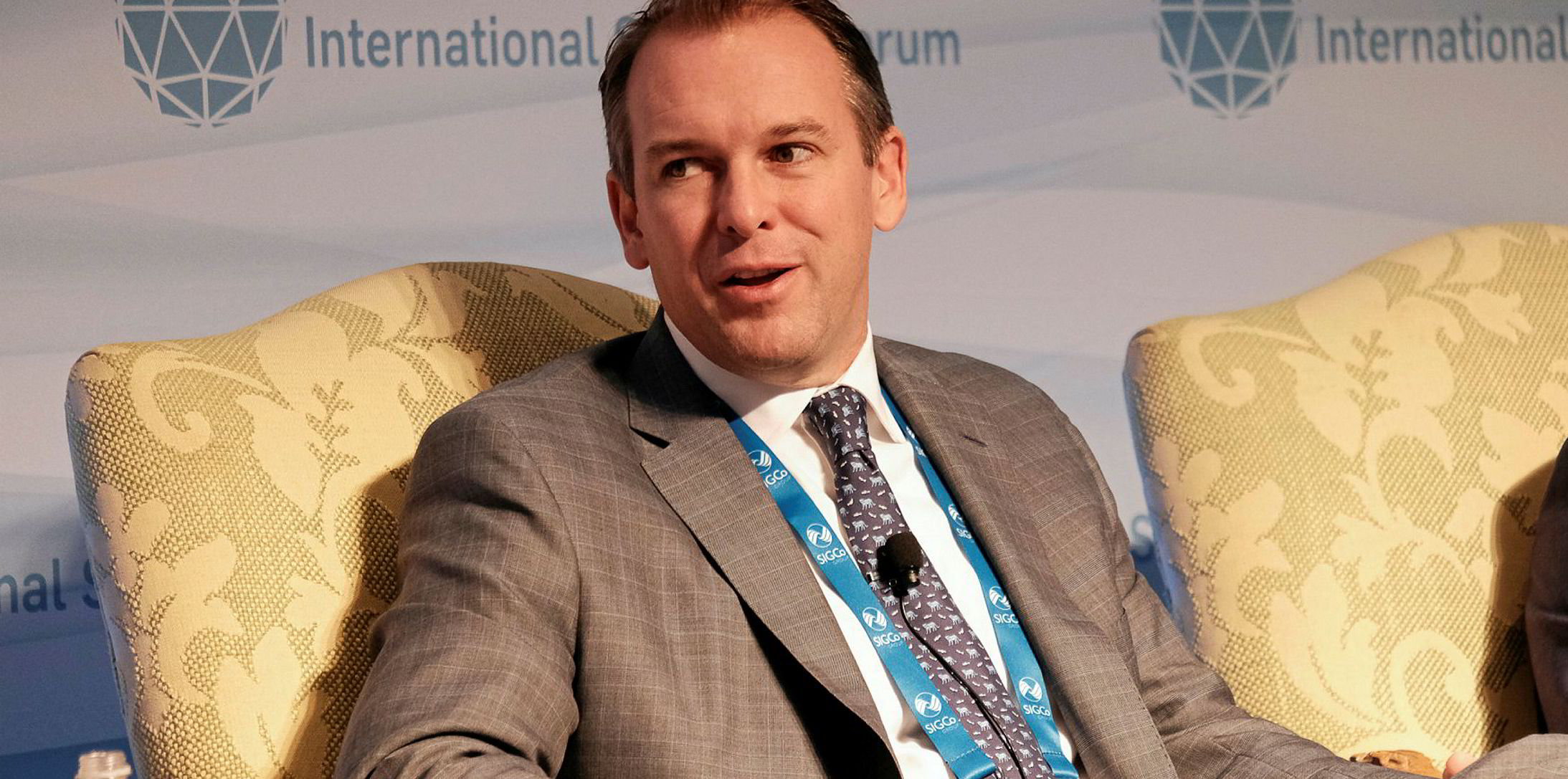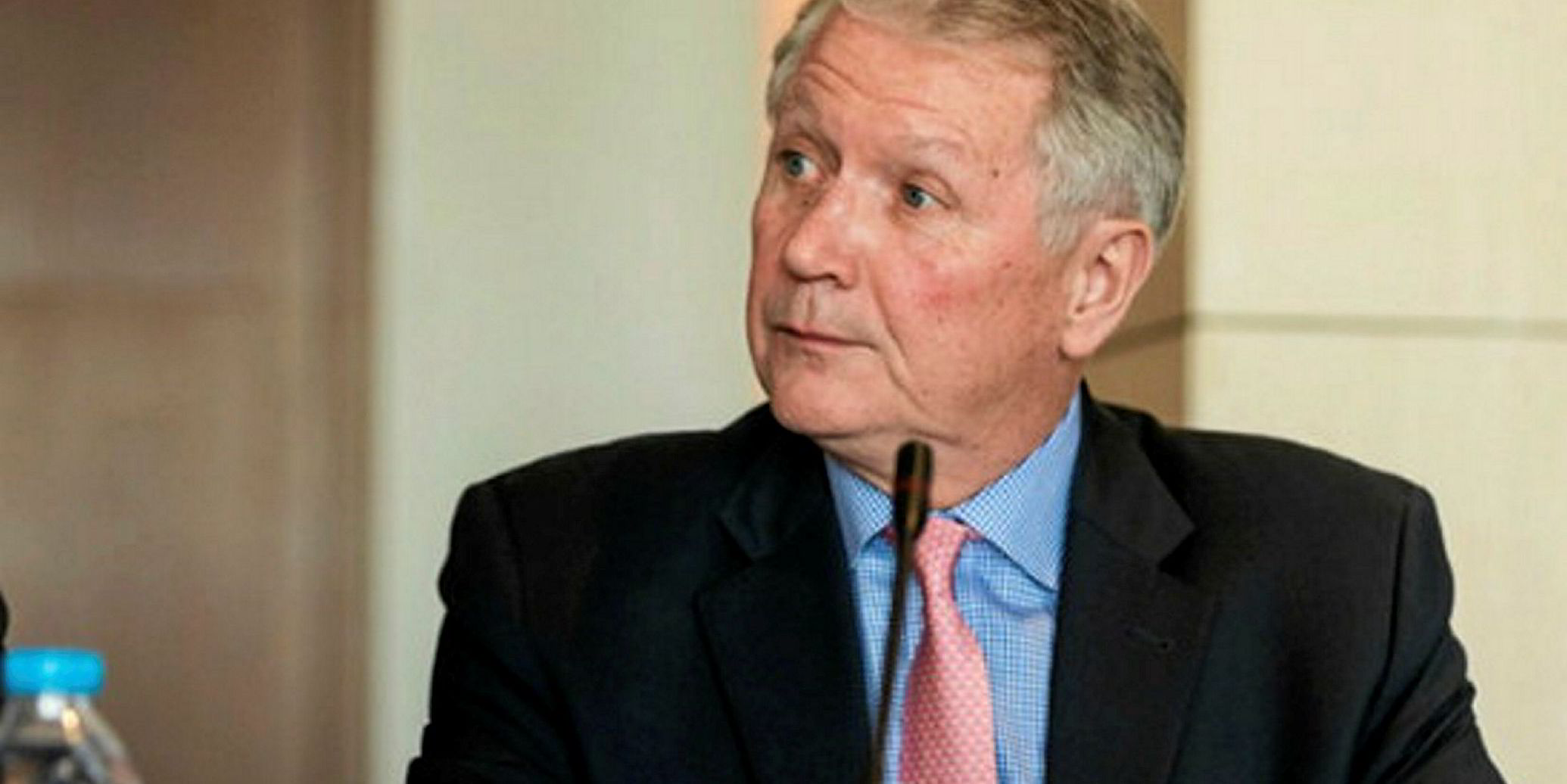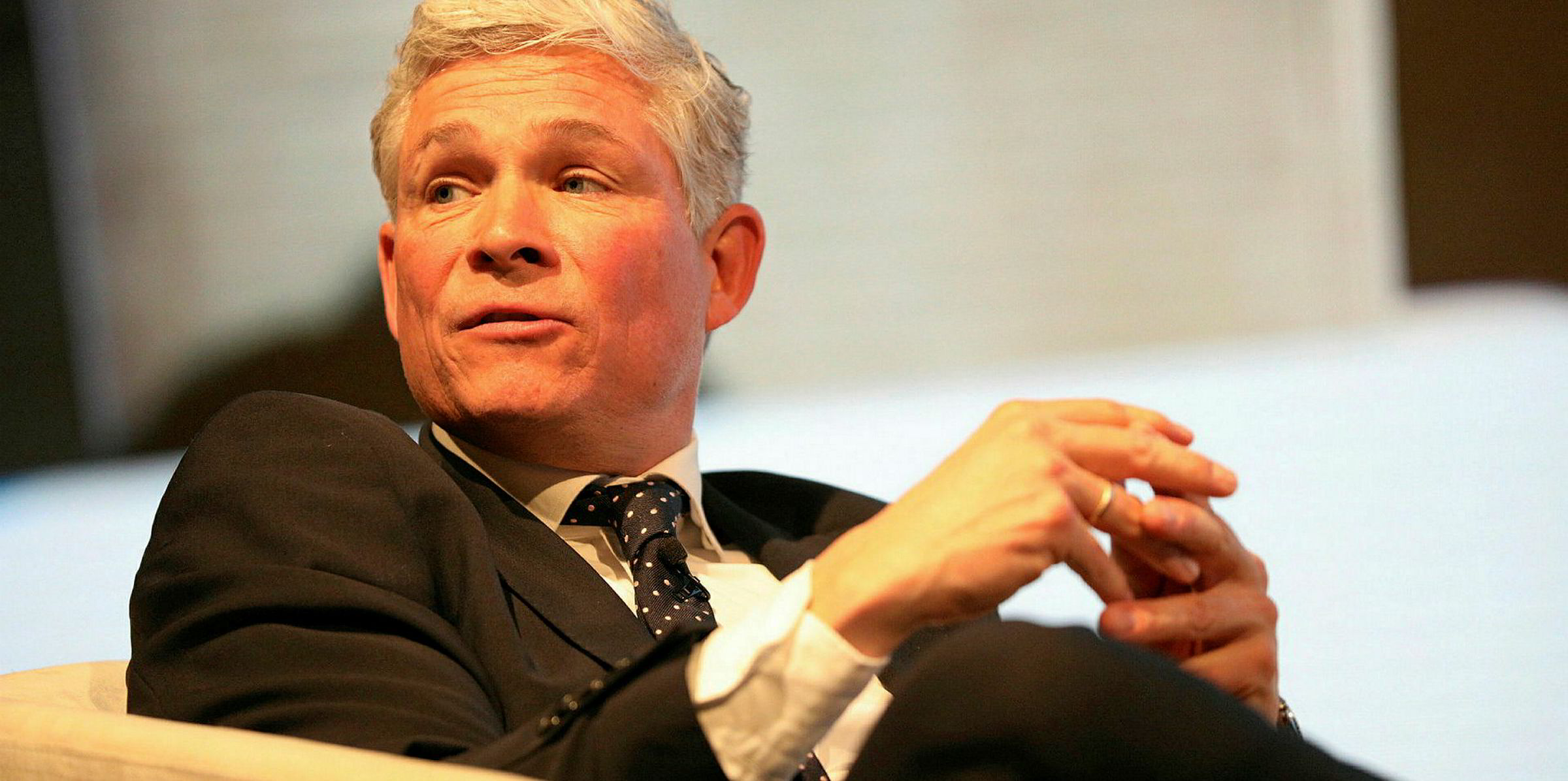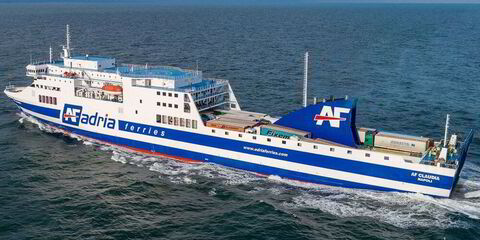A second finance man has stepped forward to assert that product tanker giant Hafnia Tankers priced its Norwegian equity offering close to its net asset value this month.
The comments by Mark Whatley of US bank Evercore Partners cast a positive light on the deal, even though it failed to meet its fundraising targets.
Whatley made the assertion during a conference presentation this week, clashing somewhat with the view of Scorpio Tankers president Robert Bugbee, a Hafnia competitor.
View from Cleaves
However, Whatley’s remarks effectively mirrored an assessment by equity analyst Joakim Hannisdahl of Cleaves Securities, who said Hafnia’s placement came just above NAV.
The assessment from Whatley came during his appearance at Marine Money’s annual ship finance forum in New York.
That is not to say that his appraisal was much more positive than that of Bugbee – who spoke before him at the same conference – as to the overall execution of the Hafnia deal.
The Mikael Skov-led shipowner raised $230m to win a listing on Oslo’s Axess Exchange despite setting an initial target of $345m. Inside backer BW Group gave up plans to sell $25m of its shareholding and wound up buying $50m more instead.
“They came to the market with a flawed strategy,” Whatley said.
“The deal was too big and BW was a seller, which I think surprised a lot of people. There was no momentum to build a $300m-plus deal. It’s not that deep of an investor universe, and $300m is a large deal, particularly with all the [private equity] guys selling.”
But that is where Whatley did have something positive to say.
“Robert mentioned a 20% discount to NAV. Our math was that [banks leading the deal] did a fantastic job anchoring investors to a completely unrealistic price and sold the deal pretty close to NAV.”
Bugbee had previously criticised the deal in the midst of a rant against private equity. With 102 owned or chartered-in tankers, Hafnia is one of the few companies that can rival the fleet size of his 138-ship Scorpio.
“You’ve waited all this time for the product tanker market to get better, and now that it is, you sell your shares at a 20% discount to NAV,” Bugbee said of the private equity exit from Hafnia.
Following the conference, Bugbee approached TradeWinds with some further thoughts on the issue. He stuck to his guns on the NAV question, but clarified that in some ways he admired the execution of the deal.
"I think I know, and am well placed, on how to calculate Hafnia 'present NAV', accounting for booked income and present rising values of assets in negotiation," Bugbee said.
"Most investment bankers or analyst NAVs are backward-looking by definition of having to use old data. The private equity sponsors sold at a significant discount to 'present' value. The buyers were fortunate and received a bargain that shortly will trade higher."
But then a clarification.
"My point was not that the investment bankers did a bad job, nor management in their presentation. No, rather the opposite, considering the unprecedented number of top 10 shareholders, board members and sponsors that wanted to sell and the total size of those 'sell' orders. They did a fantastic job to get the deal done at all."
Hafnia said PAG sold shares worth $42.4m, followed by Davidson Kempner ($18.7m), Oak Hill Capital ($14.8m), Global Natural Resources Investments ($14.5m), Blackstone ($13.3m), Tufton Oceanic ($11m) and Tennenbaum Capital Partners ($10.2m).
Hafnia reduced expectations in the offering in a few ways.
Rather than selling $125m in new shares, it sold $75m.
Rather than selling $175m in shares already held by insider private equity backers, it sold $125m.
Sale price compromise
The sale price, too, was a compromise as the original range had been set at NOK 26.20 to NOK 30.90 per share, but settled at NOK 25.45 ($2.79).
Whether Hafnia achieved NAV or not, it has been a struggle for the company to get back to the deal price in the week that the share has been trading on the Axess.
The share took a steep drop to NOK 23.49 in the first couple of hours of trading before bouncing back up, likely with the help of stabilisation activity by the deal’s underwriting banks.
Still, it has closed below the deal price on each of the trading days since.(Copyright)






